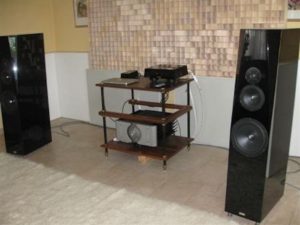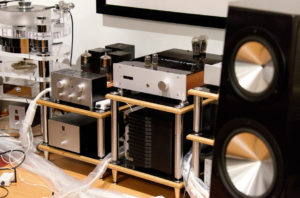"Dear Mrs. Austerschulte, dear Mr. Klocke and all employees at the Schnerzinger products.
After the for the time being last newcomer (the emphasis is on "for the time being") - power cable Resolution Two HC - from the house of Schnerzinger has "settled in" in my system, I would like to try to describe what happened:
I am thankful to heaven that I am not a hi-fi journalist who has to put into words what the components he has tested are capable of. Therefore, my respect to the test report from "Image-Hifi" by Mr. Ibrahim on the Essential Line on your homepage, in which he comes to the very conclusion which I wholeheartedly share: "I'm just bathing in euphony, and beyond all the details of materials and construction can be determined: It simply sounds right and absolutely coherent.
I am aware that my comments are subjective impressions and that it is in the nature of language that adjectives describing the sound quality of a system can be interpreted differently by different people. I would therefore like to go a bit further to explain what happens to me when I sit down in front of my system to listen to music in a concentrated manner:
It is generally accepted that Class A amplifiers need at least an hour to reach their full operating temperature. It was precisely this "warm-up" phase that seemed to have disappeared when the first element (Resolution Two speaker cable) was used: the cold monos spontaneously played better than with the old cables when they reached operating temperature. The same phenomenon occurred after I first changed the AF cables between the preamp and the source and some time later renewed the pre-power amp connection (Resolution 2 XLR in each case).
Long story short, what comes out of the system after a good hour, is for me not adequate to substantiate with words, except perhaps with the emotions that are released when - preferably with closed eyes - only the music is there and the equipment completely fades into the background. Pure relaxation!
My journey with Schnerzinger has now lasted almost two years and the gain in sound quality has steadily increased, starting with the wall socket and continuing with the Grid Protector and NF cables. The dealers I trust, the brothers Markus and Stefan Kampschulte of "Loftsound", have always advised me very competently on the basis of their experience along the way and so my question as to whether an increase in the sound experience is still possible through Schnerzinger power cables was spontaneously answered with "yes".
In view of the investment, I was thankfully given the opportunity by Schnerzinger to try out beforehand what the power cables do in my system.
Even the "normal" version of the cable left me in disbelief. How can a power cable have sooo much influence on the sound?!
I must make it clear here, it is not subtle little things that now characterize the sound with a naturalness that was never there before. It is a change that in a second-rate soap would have caused the actor or actress to scream "Oh my God" with devotion!?
For me an absolute MUST HAVE. Therefore I contacted Stefan Kampschulte to order the cables. Meanwhile Stefan had contact with Dirk Klocke and thanks to the short wire between Schnerzinger and Loftsound found out that Mr. Klocke had recommended the use of the HC version - on the basis of his own experience with my Class A monos - because that will pay off sonically!
How right he was!!!!! Through the direct comparison with "normal" / "HC" it was immediately clear that the already very good Resolution Two was still outrun by the Resolution Two HC! Many, many thanks for this recommendation and that I got the opportunity to try out!!!
According to a proverb, a person only knows what he had when it is no longer there. That may be true, but based on my experience with Schnerzinger products, I would argue that you don't know what you didn't have until it's gone. Only your own ears can be the incorruptible judge in this process.
Hearing is believing!!!!!!
With musical greetings
B.G." (translated from the german original)







